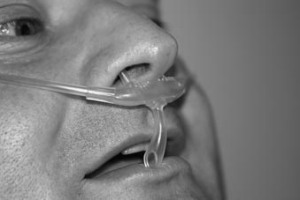Assessment of the Addition of Prehospital Continuous Positive Airway Pressure (CPAP) to an Urban Emergency Medical Services (EMS) System in Persons with Severe Respiratory Distress
The Journal of Emergency Medicine. Volume 45, Issue 2 , Pages 210-219, August 2013
The use of continuous positive airway pressure (CPAP)-assisted ventilation in the prehospital setting has not been well studied.
Objectives
The purpose of this study was to measure the efficacy of adding prehospital CPAP to an urban emergency medical services (EMS) respiratory distress protocol for persons with respiratory distress.
Methods
An historical cohort analysis of consecutive EMS patients presenting during the years 2005–2010. Groups were matched for severity of respiratory distress. Physiologic variables were the primary outcomes obtained from first responders and upon triage in the Emergency Department. Additional outcomes included endotracheal intubation rate, hospital mortality, overall hospital length of stay (LOS), intensive care unit (ICU) admission, and ICU LOS.
Results
There were a total of 410 consecutive patients with predetermined criteria for severe respiratory distress, 235 historical controls matched with 175 post-implementation patients, entered in the study. The average age was 67 years; 54% were men. There were significant median differences in heart and respiratory rates favoring the historical cohort (all p < 0.05). There were no significant differences in intubation rate, overall hospital LOS, ICU admission rate, ICU LOS, or hospital mortality (all p > 0.05). Patients who were continued on non-invasive ventilatory assistance had a significantly improved rate of intubation and ICU LOS (all p < 0.05).
Conclusion
The addition of CPAP to an EMS prehospital respiratory distress protocol resulted in improved heart and respiratory rates. Though not statistically significant, decrease in overall and ICU LOS were observed. Patients with continued ventilatory assistance seemed to have improved rates of intubation and ICU LOS.

